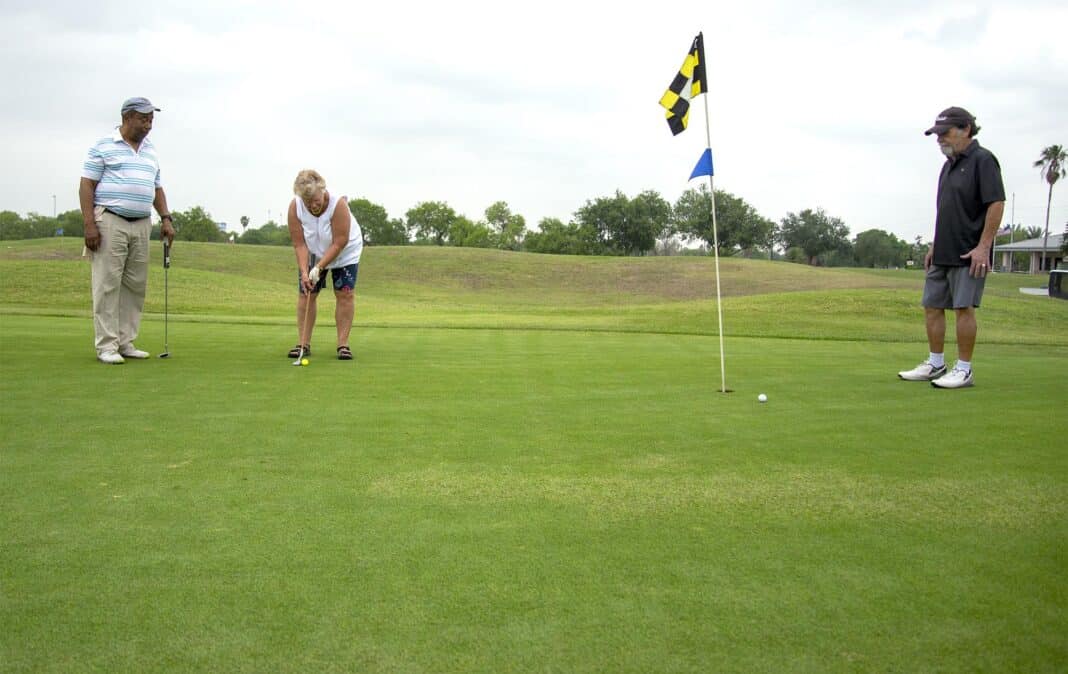HARLINGEN — After about five years of planning, an architectural firm boasting a “local flair” is getting ready to launch a $3.1 million project aimed at drawing players back to the Tony Butler Golf Course — and pulling it out of the hole.
Earlier this week, city commissioners picked Jeffrey D. Blume Golf Course Architects to renovate the 92-year-old Rio Grande Valley icon’s irrigation system while pushing up its greens to help pump revenue into the 230-acre course that’s run a deficit for more than eight years.
Now, officials are negotiating a contract with the Houston-based firm, City Manager Gabriel Gonzalez stated Friday.
Commissioners picked the firm after presentations from Arlington-based GolfScapes Inc. and Ross Golf Design in Austin.
“If you look at the scope of work they’ve done — Texas A&M and the list of projects they’ve done — that’s a lot of projects,” Commissioner Richard Uribe told commissioners, referring to Blume’s firm during Monday’s meeting. “I really liked the fact that they showed before-and-after pictures, actual work — this is what it looked like before, this is what it looks like now. They’re very detailed.”
Experience
During his presentation, Blume told commissioners his 32 years of experience in golf course architecture includes designing and renovating award-winning golf courses in the United States along with courses in Mexico, Japan and China.
“I myself have probably done more municipal work in Texas than any other architect,” he said.
The firm’s experience includes designing golf courses for Grand Pines Golf Club at Bentwater in Montgomery, the Golfcrest Country Club in Pearland, the Boiling Springs Golf Club in Woodward, Okla., and the Golf Club at Texas A&M University.
‘Local flair’
On Blume’s team, Harlingen natives Rene Rangel, chief executive officer at Sterling Golf Management in Houston, and Roman Robledo, his nephew, learned to play golf on the course while Bennett Campbell, an irrigation designer from Laguna Vista, has played the course for 40 years.
“We think we bring a very local flair with our team,” he said. “Our team has more familiarity with Tony Butler than anybody you’re considering. They’re all Harlingen and South Texas guys and play the golf course on a regular basis.”
As part of the project aimed at overhauling the golf course’s old irrigation system, Campbell said he plans to narrow the gaps between sprinkler heads while installing HDEP pipes that won’t “leak.”
“I know the golf course — I’ve been playing it for 40 years,” Campbell, a certified golf irrigation designer, told commissioners. “I want to see golf succeed in the city of Harlingen. I think you’ve got a wonderful golf course. I’ve always liked it and I want to do whatever I can do to make sure that it stays green and it stays consistently green.”
Nine-hole short course
During the presentation, Blume told commissioners he plans to upgrade the golf course’s Executive Nine, the nine-hole short course that’s a favorite among Winter Texans and young players.
Last year, the previous commission closed off holes 19 to 27 to cut maintenance costs while mulling the sale of a 30-acre tract running across holes 19 to 23, prime land along Interstate 69’s frontage road with an estimated value of about $5 million.
Meanwhile, holes 24 to 27 remained open for play.
At the time the past commission voted to close the short course, officials were counting on using the money to fund upgrades to the golf course as part their plan to draw golfers back.
But they turned up a decades-old city resolution restricting the land’s use to parks and recreation, Commissioner Frank Puente has said, adding voters would have to decide whether the city could sell the land.
In July, the commission’s new majority voted to re-open the short course, counting on drawing Winter Texan players back to the golf course.
“Although the project is only specified as 18 holes, we’re going to look at that entire property. We know there was another nine holes — and what might be the best use of that property,” Blume told commissioners. “It could be the third nine. Maybe there’s something we can do with it that can drive revenues for the facility a little bit better.”
In San Antonio, the firm designed a lighted nine-hole par 3 course that’s the second-biggest money-maker out of the city’s Municipal Golf Association’s eight properties, Blume said.
“So we might want to look at something like that,” he said. “At Tony Butler, there’s some good (topography) to work with, so it’s an exciting palette.”
The project
As part of the $3.1 million project, city officials plan a $1.9 million overhaul of the golf course’s old irrigation system, a $575,575 upgrade of its greens and the development of a $264,000 drainage system along low-lying areas.
Officials are counting on the upgrades to draw more revenue to help the golf course pay for itself.
In July, a financial report showed the golf course generated $666,986 while taking $983,470 in expenditures, leaving a shortfall of $316,484 last year.
According to the report, the golf course has run annual deficits ranging from $419,713 in fiscal year 2015-2016 to $223,731 in 2018-2019.
Now, the golf course’s total deficit stands at $846,548, a report showed.
Consultant’s report
In 2019, officials paid $22,000 to hire the National Golf Foundation, a national golf consulting firm, to recommend upgrades aimed boosting revenue to help the course pay for itself.
In a 97-page report, the consultants recommended as much as $3.7 million to $7 million worth of improvements aimed at overhauling much of the golf course.
Recommendations included rebuilding or replacing “major infrastructure components of the 18-hole course — greens, irrigation system, bunkers, drainage” at a cost of $3.75 million, the report stated.
“We recommend, at a minimum, replacing and/or upgrading all major infrastructure components, including greens, irrigation system, bunkers, drainage and tees.”




